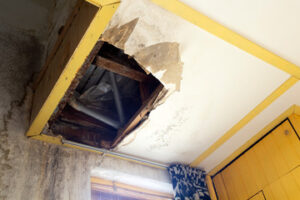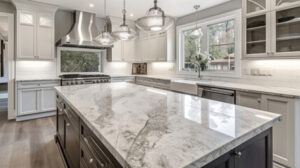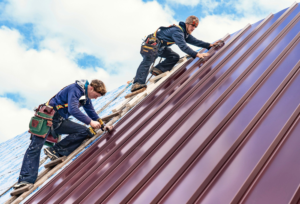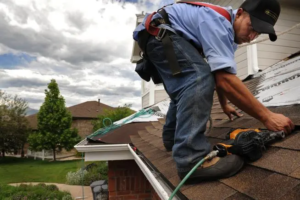Window Replacement Spicewood enhances energy efficiency, insulation, and aesthetics. If you’re experiencing drafts, water infiltration, visible damage, or condensation between windows, it might be time for new replacement windows.
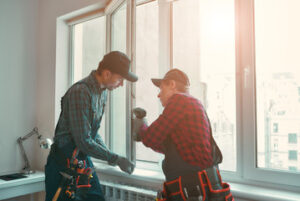
Window installation requires precise measurements and careful preparation to ensure a tight fit and lasting performance. Understanding the components of a window can help minimize confusion when reviewing your options with contractors.
The frame is the backbone of a window and plays a vital role in its durability, energy efficiency and aesthetic. Window frames are available in a variety of materials, each with their own unique benefits and drawbacks. Window frames should be considered long before determining the type of glass to install in the frame.
The most popular frames are made of wood, aluminum and vinyl, but there are also many other options. The frame material you choose will depend on your personal style, budget and maintenance needs.
Wooden frames offer a classic look and have excellent insulation properties, making them a good choice for any home. They are durable and weather resistant, but require regular maintenance to prevent rotting and insect infestation. Wooden frames also have a higher price point than other frame materials.
Aluminum frames are lightweight, durable and low-maintenance. They are easy to customize and can be painted to match the rest of your home’s décor. Aluminum is also an affordable option for a wide range of window sizes and styles.
Fiberglass is another low-maintenance and cost-effective frame material. It resists weather changes better than other types of frames and is highly insulative, keeping your home cool in the summer and warm in the winter. Fiberglass frames, however, don’t offer the same level of aesthetic customization as other frame materials.
Glass
Window glass replacement is a cost-effective solution to improving home energy efficiency, security, and internal comfort. This upgrade is a more affordable option than full window replacements, which involve new frames and may require structural changes to the house.
The replacement process involves carefully removing the existing window pane and preparing a suitable area for the new installation. To prevent injury, it is recommended to hire professionals who have the necessary experience and tools to perform the job safely and efficiently.
A new window pane is then laid in the opening, with a thin layer of glazing compound applied around the perimeter to create bedding. This ensures that the window pane fits tightly and is secure within the frame, which helps improve insulation and weather resistance. For improved durability, professional installers use a high-quality sealant to ensure a watertight fit.
It is also important to consider the type of glass used in your windows. Modern double- or triple-glazed windows, for example, are made with insulating material that reduces airflow and helps your heating and cooling systems work less to maintain a comfortable indoor temperature. These improvements can save you money on your energy bills and help the environment by reducing waste from fossil fuels.
Other glass options include acoustic glass and Low-E coatings. These materials reflect or block ultraviolet (UV) rays that can cause discolouration of furnishings and fabrics, as well as fading of woodwork and paints. The right choice of glass will contribute to a healthy living space for your family and can increase the value of your property.
Sash
A window’s sash is a vital part of the overall structure. Its primary function is to hold the glass panes securely in place, but it also provides insulation and weatherproofing properties. This allows your home to stay comfortable year-round and helps reduce energy consumption.
The sash can feature various design features to add visual appeal to the window. It is available in a variety of materials, finishes and designs to meet your desired aesthetic. It can also be upgraded to improve the energy efficiency of your home, resulting in significant savings on your energy bills.
Over time, window sashes can become damaged, requiring replacement or repair. Often, this is due to natural swelling and shrinkage of the wood as humidity changes. However, if the window sash is stuck or jammed it may be indicative of a more serious problem such as a warped frame. This would require a more in-depth replacement process.
While DIY Window Sash Replacement is a doable project for most homeowners, it’s important to understand the complexity of the task and the importance of proper installation techniques. This is why it’s best to work with a professional, especially for larger projects. This ensures you’re getting the highest-quality results and maintains the longevity of your windows for many years to come. If you’re considering window sash replacement, consult experts or watch detailed video tutorials for guidance. Also, remember to take your time throughout the process, as working carefully and methodically will result in a better outcome. You’ll be happy you did when you have a new, energy-efficient window to enjoy! For a step-by-step guide on how to replace a window sash, check out this tutorial from Tom Silva of This Old House.
Trim
The trim around your replacement window creates a decorative look and provides an additional layer of insulation. The material and style of the trim you choose also influences how your home looks, adding to its curb appeal and increasing its value. Whether your window is located in the living room or kitchen, the right trim can transform its appearance and elevate your space.
Before you begin, remove the existing trim and casing from the rough opening and inspect for any damage or moisture. Depending on the result, you may need to repair the wood or install flashing tape before proceeding. It is also important to make sure the replacement window will fit in the existing frame. The manufacturer’s largest standard size window should be able to fill the existing rough opening, but it should not reduce the operating style or the overall height of the windows in the house.
If you are replacing interior trim, it is important to match the new trim with your existing interior molding to avoid untidiness and a disjointed design. There are many styles of interior trim, ranging from simple and sleek to ornate and traditional. If you’re not sure which style will best complement your home, contact our professionals for guidance.
During the installation process, be sure to wear earplugs or earmuffs, as well as protective eyewear. You will need a utility knife, a hammer, and a pry bar. Use the utility knife to score through any dry paint in the wall to reveal the drywall underneath. Place the pry bar between the trim and the drywall and tap gently with a hammer. Continue this process on all four sides of the trim. Once the trim is removed, carefully pry off any nails left in the wall.
Hardware
Window replacement is one of the most significant home improvement projects you can undertake. You’ll not only increase your comfort and energy efficiency, but you can also refresh the aesthetics of your home with new styles and materials. But with so many choices, it can be difficult to know where to start.
Choosing the right windows for your home requires an understanding of how each type works and what kind of benefits they offer. For example, it’s important to know the difference between vinyl and vinyl-clad windows, which use a durable plastic polymer coating on the outside of the frame and sash. While they look similar, they function differently.
Vinyl replacement windows are an affordable option that provides high-performance and long-lasting beauty, requiring little maintenance and upkeep. Compared to traditional wood or aluminum-clad windows, they are also significantly more efficient.
The best time to replace your windows is in the fall or spring, when the weather is mild. Installing your new windows during extreme temperatures can cause the material to expand and contract, creating a poor seal and affecting performance.
If your current windows are old and inefficient, they may be causing drafts, visible damage, condensation between panes, or excessive external noise. The simplest solution is to opt for replacement windows, which are designed to fit into the existing window frames. This process is less invasive and cost-effective than full-frame renovations, which include the frame and are typically installed during building or major remodels.
Before requesting an estimate, it’s helpful to familiarize yourself with the terminology of window components. The following terms will help you communicate with your contractor and ensure that you get the exact type of window you want:
